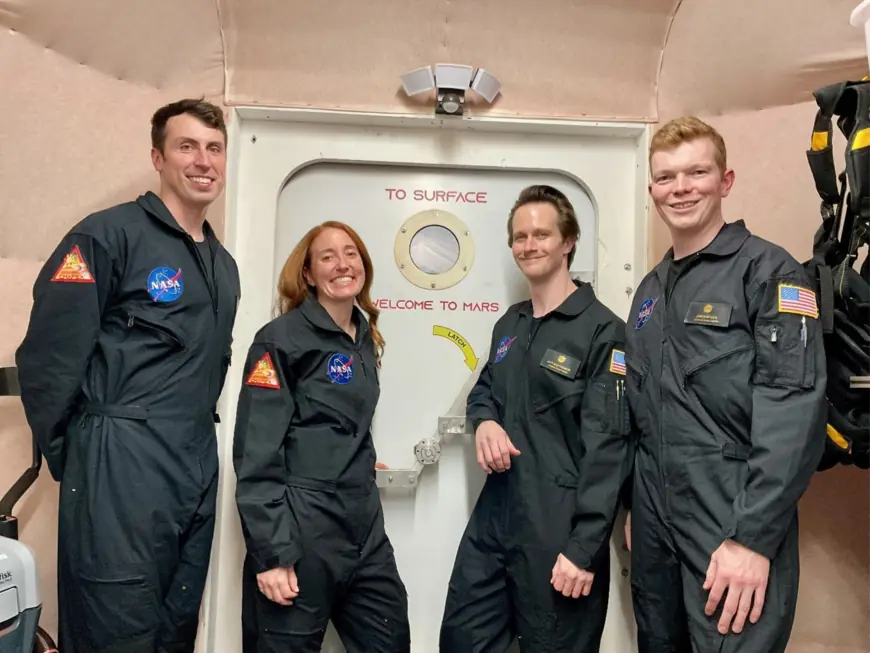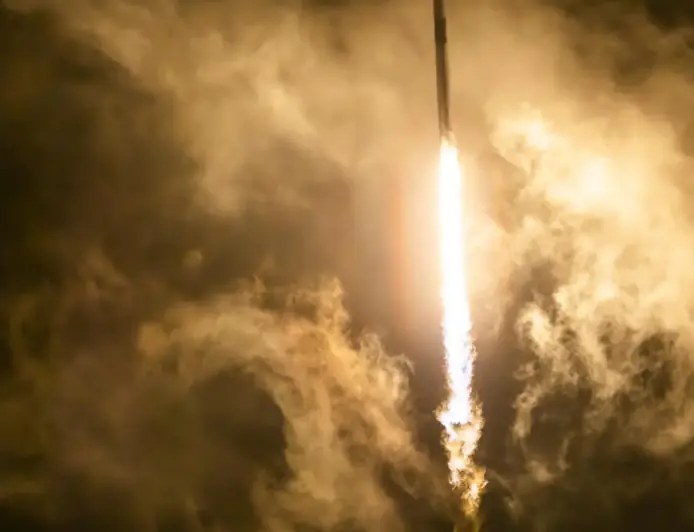CHAPEA Crew of Four Research Volunteers on The Second Mission
A crew of four research volunteers stepped inside NASA’s CHAPEA (Crew Health and Performance Exploration Analog) habitat on Oct. 19, marking the start of the agency’s second 378-day simulated Mars mission.

CHAPEA mission 2 crew members (from left) Ross Elder, Ellen Ellis, Matthew Montgomery, and James Spicer pose in front of the door to the simulated Martian landscape for their first photo inside the CHAPEA habitat after their mission began in October 2025.
A crew of four research volunteers stepped inside NASA’s CHAPEA (Crew Health and Performance Exploration Analog) habitat on Oct. 19, marking the start of the agency’s second 378-day simulated Mars mission.
Ross Elder, Ellen Ellis, Matthew Montgomery, and James Spicer are living and working inside the roughly 1,700-square-foot 3D-printed habitat at the agency’s Johnson Space Center in Houston until Oct. 31, 2026.
“The information and lessons learned through CHAPEA will inform real-life mission planning, vehicle and surface habitat designs, and other resources NASA needs to support crew health and performance as we venture beyond low-Earth orbit,” said Sara Whiting, Human Research Program project scientist. “Through these lessons, NASA’s Human Research Program is reducing human health and performance risks of spaceflight to enable safe and successful crewed missions to the Moon, Mars, and beyond.”
The crew will face the challenges of a real Mars mission, and only leave to perform simulated “Marswalk” activities directly outside the habitat, wearing spacesuits, to traverse a simulated Mars environment filled with red sand. During these Marswalks, they will remain isolated within the building that houses CHAPEA at NASA Johnson.
“These crewmembers will help provide foundational data for mission planning and vehicle design and inform trades between resources, methods, and technologies that best support health and performance within the constraints of living on Mars,” said Grace Douglas, CHAPEA principal investigator. “The information gained from these simulated missions is critical to NASA’s goal of sending astronauts to explore Mars.”
Reward this post with your reaction or TipDrop:
 Like
0
Like
0
 Dislike
0
Dislike
0
 Love
0
Love
0
 Funny
0
Funny
0
 Angry
0
Angry
0
 Sad
0
Sad
0
 TipDrop
0
TipDrop
0






















